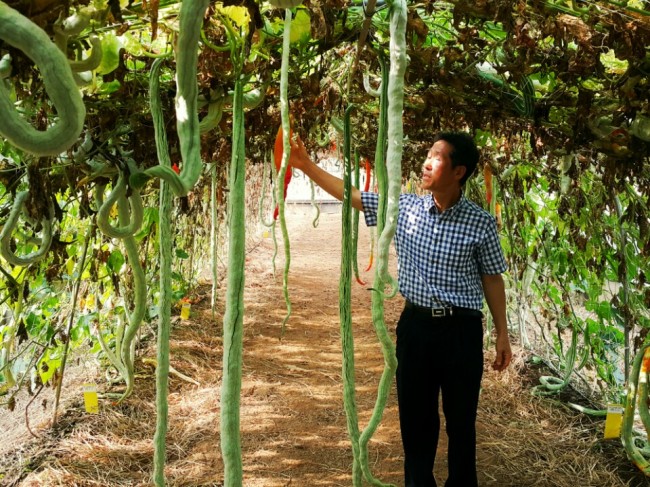Korea preps for climate change with tropical fruits
By Korea HeraldPublished : Aug. 28, 2016 - 20:16
JEJU CITY, Jejudo -- Though fruits and vegetables like mangoes, papaya, carambola and dragon fruit have long been considered exclusive goods produced by the tropical world, they may soon become commonplace crops found in a rather unlikely location -- South Korea.
Korean agricultural researchers are experimenting with new tropical crops that could grow well under hotter weather on the Korean Peninsula in preparation for global climate change that is driving up the earth’s temperature year-by-year.
At the heart of such efforts is the state-run Research Institute of Climate Change and Agriculture, located on the southern resort island of Jejudo.
Korean agricultural researchers are experimenting with new tropical crops that could grow well under hotter weather on the Korean Peninsula in preparation for global climate change that is driving up the earth’s temperature year-by-year.
At the heart of such efforts is the state-run Research Institute of Climate Change and Agriculture, located on the southern resort island of Jejudo.

Established under the Rural Development Administration, the Jejudo-based institute is dedicated to studying and identifying the future impact of climate change on Korea’s agricultural landscape and preparing for the consequences.
“We are investigating how climate change could hurt the competitiveness of Korea’s current stronghold crops, as well as which tropical fruits could be successfully grown and cultivated here in the future,” the institute’s director Seo Hyeong-ho told reporters on Jejudo last Friday.
The institute is currently cultivating 42 tropical plants and vegetables at its on-site greenhouses to determine which crops could be the most profitable in the future in terms of the cultivation process, costs and market value.
One indoor orchard houses the well-known apple mango, a fruit some Jejudo farmers have already commercialized, while others house more unfamiliar tropical vegetables such as the long-shaped snake cucumber, star-shaped carambola and the chayote squash, among others.
“Most of the tropical fruits and vegetables under research here come from Southeast Asia as well as parts of Central America,” said an institute official who oversees the greenhouses.
“When Korea’s tropical plants business takes off, local customers will be able to purchase locally grown tropical fruits and vegetables that are fresher and cheaper than their imported counterparts,” he said.
For five years, the institute has also been test-growing olive trees hailing from the Mediterranean on some 660 square meters of Jejudo soil. The first harvest is scheduled for October.
As olive trees cannot live in temperature below 10 degrees Celsius, Jejudo had been previously unsuitable to growing olives. However, Jejudo’s rising temperatures in the winter have made it possible to cultivate the trees without artificial heating systems, the official explained.
Over the past 100 years, Korea’s average temperature has risen by about 1.8 degrees Celsius, at a rate roughly 2.4 times faster than the Earth’s average, the institute said.
The warmer weather conditions have already prompted many Jejudo farmers to switch their main crops from mandarin oranges to more tropical fruits such as kiwis and hallabong oranges over the recent years, according to the Rural Development Administration.
By Sohn Ji-young (jys@heraldcorp.com)
-
Articles by Korea Herald



















![[Today’s K-pop] Treasure to publish magazine for debut anniversary](http://res.heraldm.com/phpwas/restmb_idxmake.php?idx=642&simg=/content/image/2024/07/26/20240726050551_0.jpg&u=)